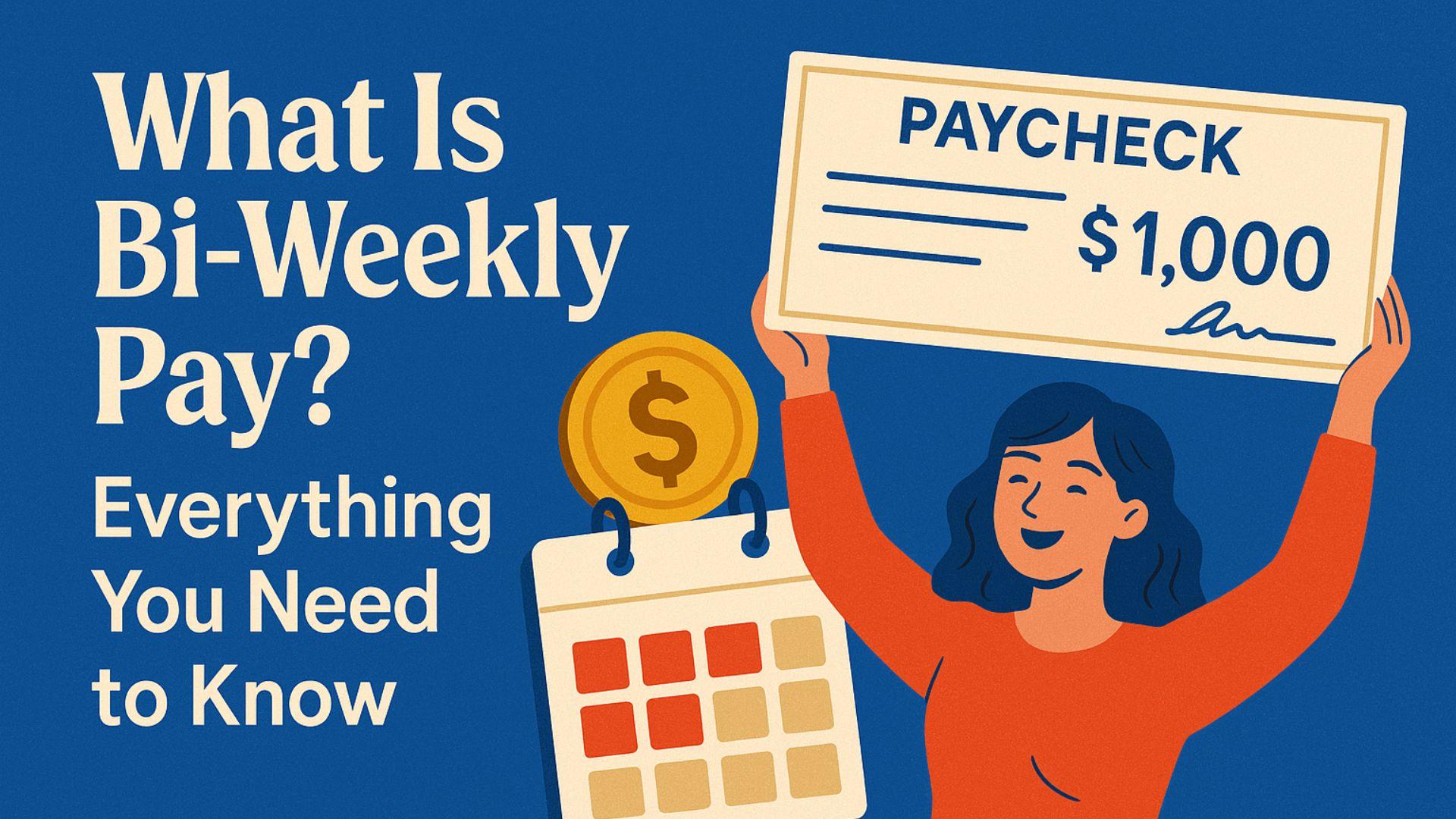What Is Bi Weekly Pay? Everything You Need To Know

Have you ever wondered, “What is bi weekly pay and how does it actually work?” This is a common question among employees starting a new job or reviewing their pay schedule. Simply put, bi-weekly pay means employees receive their wages every two weeks, typically resulting in 26 paychecks per year. Unlike monthly or semi-monthly pay, this schedule offers more frequent access to income, which can be helpful for budgeting and managing expenses.
How Does Bi-Weekly Pay Work?
Bi-weekly pay follows a clear structure:
-
Employees are paid once every two weeks (usually on the same day, such as every other Friday).
-
Over a year, this adds up to 26 pay periods instead of 24 (as in semi-monthly schedules).
-
Two months each year will typically have three paydays instead of two.
This system is popular in many industries because it balances convenience for employers with predictability for employees.
Advantages of Bi-Weekly Pay
For many workers, this pay cycle offers benefits that make day-to-day money management easier. The Advantages of Bi-Weekly Pay are:-
-
More frequent income - You don’t have to wait a full month to get paid.
-
Extra paychecks - Twice a year, employees enjoy an additional paycheck, which can be saved or used for larger expenses.
-
Simpler budgeting - Aligning paydays with recurring bills (like rent, utilities, or subscriptions) is easier.
-
Steady routine - Knowing that payday comes every other week helps reduce financial stress.
Potential Drawbacks to Consider
While bi-weekly pay is helpful for many, it does come with a few challenges:
-
Uneven monthly budgeting – Some months have three paychecks, while others have only two, which can cause confusion.
-
Payroll complexity for employers – Companies may face slightly higher payroll processing costs.
-
Not ideal for all expenses – Bills like rent, which are usually monthly, may not always align perfectly with bi-weekly income.
Bi-Weekly vs. Semi-Monthly: What’s the Difference?
A common source of confusion is the difference between bi-weekly and semi-monthly pay.
-
Bi-weekly:Employees are paid every two weeks (26 times per year), usually on the same weekday such as Friday. This results in two months each year with three paychecks instead of two. The schedule is especially useful for hourly employees, as it aligns with wage calculations like overtime and Double Time Pay, making payroll more accurate and transparent.
-
Semi-monthly: Employees are paid twice per month, often on set dates like the 15th and 30th (24 times per year).
While the amounts may look similar, the slight difference in pay periods can impact budgeting and annual income distribution.
Why Employers Choose Bi-Weekly Pay?
Employers often adopt bi-weekly schedules because:
-
It streamlines payroll for hourly workers.
-
It complies with overtime and wage calculation requirements.
-
It improves employee satisfaction by ensuring consistent, predictable paydays.
This system is especially common in industries with large hourly workforces, such as retail, healthcare, and hospitality.
Example of Bi-Weekly Pay in Action
Imagine an employee earns $52,000 per year:
-
Annual salary: $52,000
-
Bi-weekly paycheck: $52,000 ÷ 26 = $2,000 per paycheck
Instead of waiting until the end of the month for $4,333, the employee gets a steady $2,000 every other week.
This consistency helps individuals plan for recurring expenses while also enjoying two “bonus” pay periods in certain months.
You can also watch:- How to Check Employee Details | EmpMonitor How-To Tutorial
Summary
In short, bi-weekly pay means being paid once every two weeks, or 26 times a year, providing more frequent cash flow than monthly or semi-monthly schedules. It’s popular among both employers and employees because it makes budgeting easier, offers predictable income, and occasionally provides an extra paycheck. While it may bring slight complications in monthly planning, many people find the advantages outweigh the drawbacks.
If you’re wondering how many paychecks in a year biweekly 2024, the answer is 26 paychecks, with two months giving you three instead of the usual two. This makes bi-weekly pay a practical system for managing expenses and saving more effectively.
FAQs About Bi-Weekly Pay
1. Is bi-weekly pay better than monthly?
Bi-weekly pay often feels better for budgeting because income arrives more often, though the total salary remains the same.
2. How many paychecks do you get in a year with bi-weekly pay?
You receive 26 paychecks in a year, compared to 12 for monthly and 24 for semi-monthly.
3. Do you earn more with bi-weekly pay?
No, your annual salary doesn’t change. However, the timing of paychecks may make budgeting easier.
4. Why do some months have three paychecks?
Because bi-weekly cycles don’t align perfectly with calendar months, two months per year naturally include an extra payday.
- Art
- Causes
- Crafts
- Dance
- Drinks
- Film
- Fitness
- Food
- Giochi
- Gardening
- Health
- Home
- Literature
- Music
- Networking
- Altre informazioni
- Party
- Religion
- Shopping
- Sports
- Theater
- Wellness



